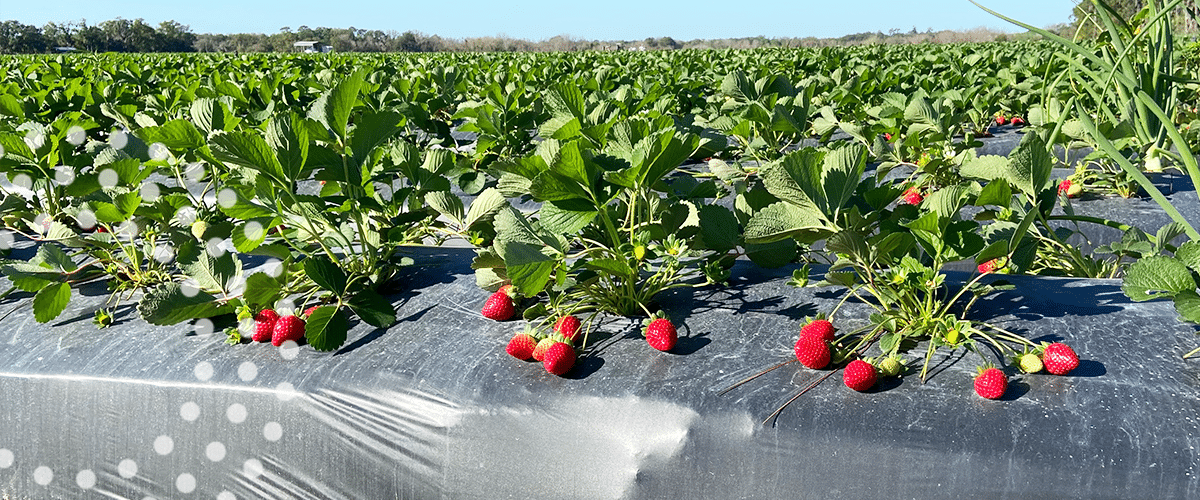Strawberry Production in Florida – Ideal Conditions to Satisfy a National Market >>

The upcoming hot summer months call for the best of nature’s cool refreshments – strawberries. After a stormy year in 2022, Florida farmers continue to bring America’s favorite bright red treats to our homes. Despite the challenges of the current market, the agriculture industry continues to strive forward with plentiful production. Fortunately, Florida’s climate during the fall, winter, and spring seasons provides the ideal groundwork to grow these berries. Ideal weather conditions and quality products pave the way for abundant, fruitful strawberry production.
Most of the US grows strawberries in the summer; however, the sweltering heat of Florida creates an undesirable environment for the crop. During winter, strawberry production relies on a set of standards unique to the sunshine state. Strawberries tend to grow the best in mildly warm temperatures between 50°F–80°F and need “less than 14 hours of daylight” (Authentic Florida). These requirements allow strawberries to flourish in the Florida region during off-season times, around late October to early April. Although strawberries could undergo perennial growth, Florida winters establish seasonal flexibility in growing the berries and allow for annual production.
Variety Selection for Optimum Results
Additionally, varieties such as “Sweet Sensation/Florida-127, Radiance, and Brilliance…” (University of Florida IFAS Extension) are commonly grown commercially in the southeast region. These varieties are adapted to “winter-plasticulture growing systems” (University of Florida IFAS Extension) that shield the fruit from soil damage and protect the plants from weeds. The importance of variety selection in agriculture largely influences the number and quality of the end product.
Unique cultivars such as Sweet Sensation ensure the optimization of desirable qualities among the plants. Strawberries are classified as low-growing herb plants that grow along “runners” across the ground, making the delicate berries susceptible to damage. The physical composition of the plant can present these specific challenges that are not as present in conventional crops like corn, cotton, or soybeans. The growing requirements of strawberries allow for success in established cropping systems in the southeast region of the United States at different seasonal timings.
Biological Tools Aid with Strawberry Plant Health
Along with the regional advantages to strawberry production, Florida has a lower risk of prolonged freezing, but the plant could always use a little extra boost of protection. With its shallow root system, the strawberry plant is especially vulnerable to external stress. Products such as TIMAC AGRO’s FERTIACTYL® GZ provide the plants with the tools needed to promote soil nutrient uptake and frost protection. Innovative biological technologies like FERTIACTYL® GZ (such as humic substances and plant extracts) position the crop for success in cases of unpredictable natural pressures. Similarly, challenging market conditions are prompting farmers around Plant City, Florida to utilize their biological toolbox to protect their fields and investments. Strains on fertilizer supply are encouraging growers to make the most out of their hard work, money, and devotion to fostering the health of the strawberry industry.
We celebrate National Strawberry Day to honor the uniqueness of growing these juicy, bright fruits. The fabric of the strawberry industry lies in the careful fostering of the Floridian lands. Biotechnology opens the door to improving the foundation and upkeep of American agriculture. Our Floridian growers make the availability of these sweet berries possible through their diligent commitment to their farms. TIMAC AGRO USA promises to walk alongside growers every step of the way to bring the most to their farms.

Amber Cassell
Agronomic Technical Consultant
